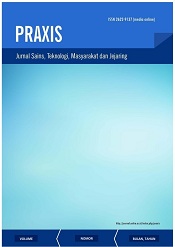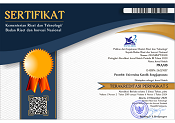Payung Hukum dalam Melindungi dan Mewujudkan Program Percepatan Penurunan Angka Stunting oleh Pemerintah Indonesia
Abstract
The most important period of growth and development as human being who is born, depend on the first 1000 days of life, begun with the formation of the fetus until reaching 23 months of age. When a child is born and detected having nutritional problems, such as stunting, it can be described through the child growth chart which is publisher by the World Health Organization (WHO), showing the Z value from the comparison between child’s height or body length with his age while monitoring, produces standard deviation value smaller than (<) -2. The Republic of Indonesia, based on Rencana Pembangunan Jangka Menengah Nasional (RPJMN) proposed by the government Republic of Indonesia under the leadership of Joko Widodo as a president that has target Indonesia can have human resources (HR) that are able to compete not only within its county but also abroad. To reach this dream, Indonesia is required to achieve the target by reducing the stunting rate by 14% in 2024 based on the description containe in Article 5 (1) of Peraturan Presiden Nomor 72 Tahun 2021 tentang Percepatan Penurunan Stunting. However, making this happen is not easy for several regions in Indonesia, one of the cities which faces the problem is Balikpapan, located in East Kalimantan Province. Instead of showing a decline, the number of stunting sufferers has reversed direction in the recording period from January to June 2023, amounting to 1541 cases. When compared with the findings of stunting cases in 2022 in the same month, there were 1483 cases. To prevent the worsening of stunting cases, the Indonesian Government has actually implemented a renewable budget in 2023 amounting to IDR 34.15 trillion, supported by several Ministries who are synergizing with each other in providing specific and sensitive interventions. If the hopes set by the Indonesian Government to reduce cases of stunting fail, it could be said to harm a child's right to live, grow and develop so that his or her welfare cannot be realized. Therefore, this paper was written with the aim of showing the form of legal protection provided to support success in suppressing, including if able reducing the number of stunting sufferers in Indonesia. The form of research in writing scientific articles utilizes qualitative research methods which are descriptive analytical in nature
Keywords
Full Text:
PDF (Bahasa Indonesia)DOI: https://doi.org/10.24167/praxis.v5i3.11172
View My Stats | ISSN 2622-9137 (media online)







